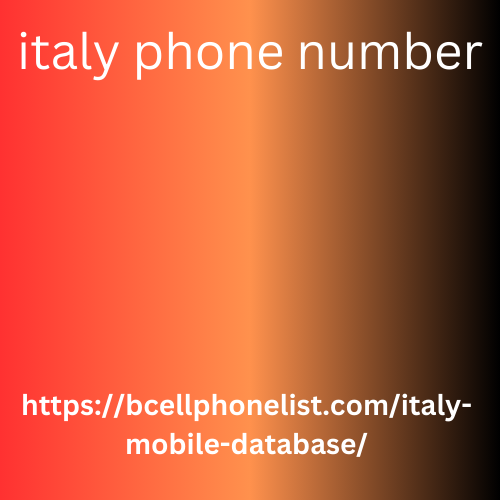Post by alimularefin63 on Jun 8, 2024 6:28:05 GMT 1
In the ever-evolving landscape of technology, geolocation has become a cornerstone for numerous applications, from navigation to targeted advertising. Recently, a new development has emerged in this field: the 52-region code. This cryptic designation has piqued the curiosity of tech enthusiasts and industry professionals alike, prompting questions about its significance and implications. In this article, we'll delve into the intricacies of the 52-region code, exploring its origins, functionality, and potential impact.
Understanding the 52-Region Code: Origins and Functionality
The 52-region code is a revolutionary approach to geolocation that promises italy phone number to enhance precision and efficiency in location-based services. Unlike traditional systems, which rely on coordinates or arbitrary divisions, the 52-region code adopts a novel methodology inspired by principles of geometry and mathematics.
At its core, the 52-region code divides the world into 52 unique regions, each represented by a distinct alphanumeric code. These codes are generated algorithmically based on a combination of latitude, longitude, and geometric calculations. By leveraging advanced algorithms and computational techniques, the 52-region code achieves a remarkable level of granularity, enabling precise geolocation without the need for complex coordinates or extensive databases.

The Advantages of the 52-Region Code
The adoption of the 52-region code offers several compelling advantages over traditional geolocation methods. Firstly, its simplified alphanumeric format facilitates ease of use and integration across a wide range of applications. Developers can easily incorporate the 52-region code into their software platforms, streamlining the implementation process and reducing dependency on external geolocation services.
Furthermore, the 52-region code boasts superior accuracy compared to conventional systems, thanks to its geometrically optimized regions. By strategically partitioning the globe into 52 distinct areas, each with its own unique code, the 52-region system minimizes ambiguity and error, ensuring precise location identification even in densely populated or remote areas.
Implications for Industry and Innovation
The emergence of the 52-region code holds profound implications for various industries and sectors. In the realm of e-commerce and retail, for instance, precise geolocation is crucial for targeted marketing and delivery logistics. By adopting the 52-region code, businesses can optimize their operations and enhance the customer experience by accurately pinpointing user locations and preferences.
Similarly, the 52-region code has significant implications for urban planning, transportation, and emergency services. Municipalities can leverage this technology to improve infrastructure development, optimize traffic management, and streamline emergency response efforts. With the ability to precisely identify locations within 52 distinct regions, authorities can expedite rescue operations and mitigate the impact of natural disasters or other emergencies.
Conclusion: Navigating the Future with Precision
In conclusion, the 52-region code represents a groundbreaking innovation in the field of geolocation, offering unparalleled precision, efficiency, and versatility. By reimagining traditional approaches and harnessing the power of advanced algorithms, this revolutionary system promises to redefine the way we navigate and interact with the world around us.
As we continue to embrace the possibilities of technology, the 52-region code serves as a beacon of innovation, guiding us toward a future where geolocation is not just a tool, but a cornerstone of modern society. With its potential to revolutionize industries, enhance services, and empower individuals, the 52-region code heralds a new era in geospatial technology, where precision and accuracy reign supreme.
